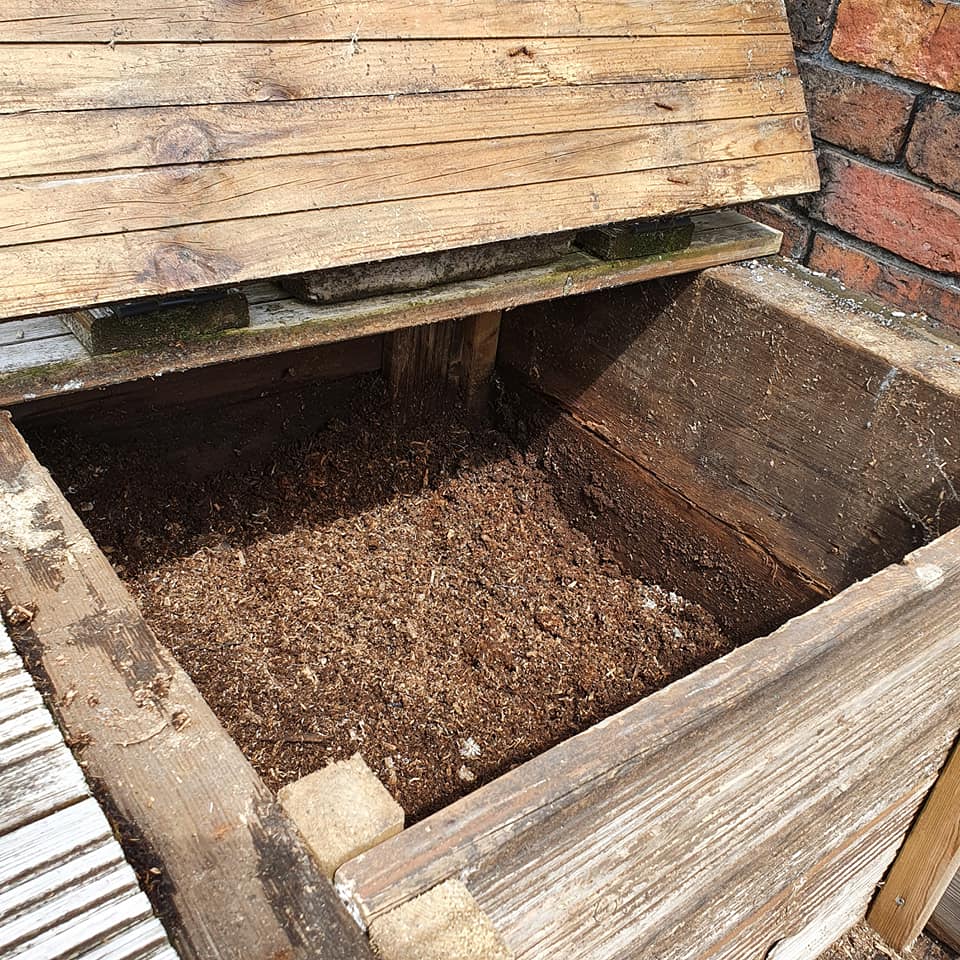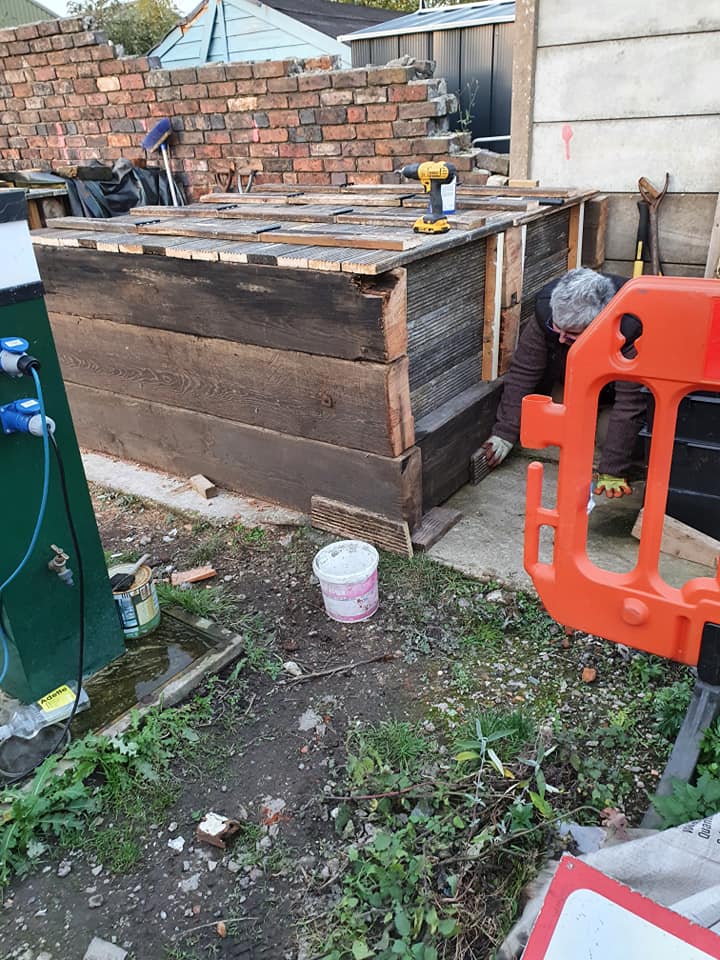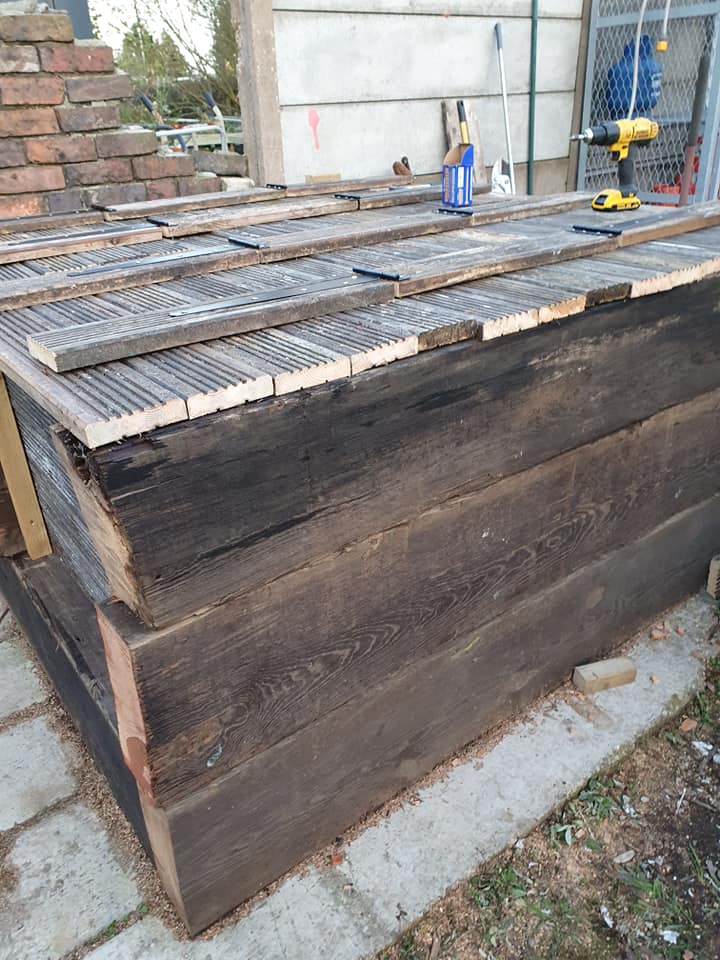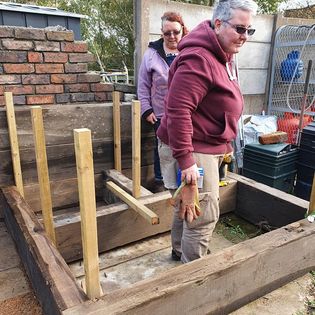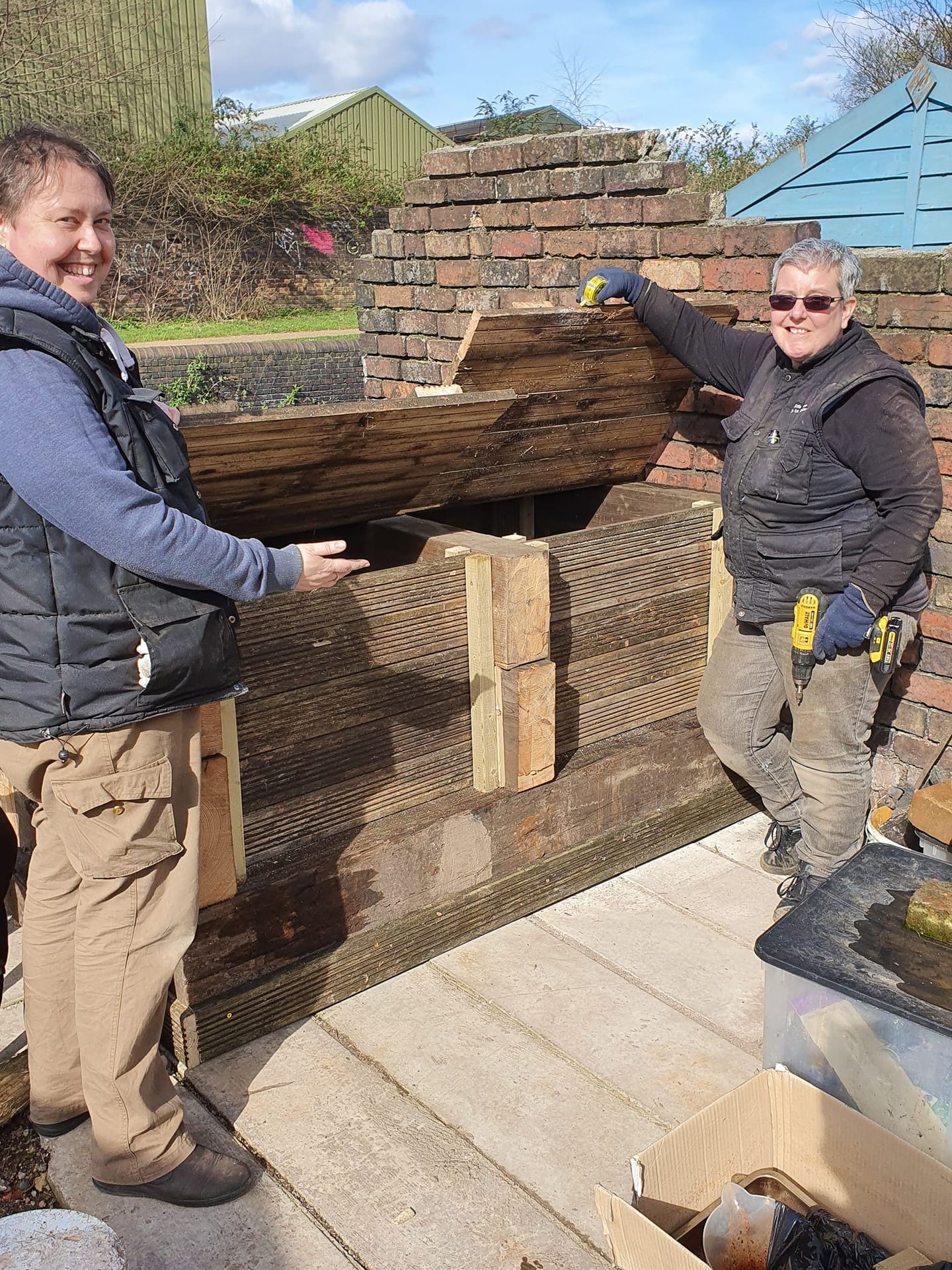Overview
Cold composting is simply allowing nature to take its course. Hot composting speeds up the natural process. Cold composting takes 9 – 12 months for nature to compete the process of turning a seemingly unusable waste material into a very usable product.
Here at Urban Moorings, we have been composting human waste for quite some time. Before beginning the Urban Moorings project, two of the boats now involved had separating /dry toilets so we were well experienced in the production of humanure.
From our experience here I would confidently say that setting up and maintaining a humanure facility can bring benefits, not least saving on the cost buying in fertiliser and compost for any flower beds pots or other containers may be in use be for non-food plants and trees.
Getting Started.
All that you need is space, about 1mtr square x 1mtr high x two minimum. As we have the space we have built 4 bins to maintain a rotation of a minimum of three months.
Building materials to construct the bins, we used old, recycled beams and cement made from cement powder and fire ash plus some 2x2 timbers for the corners of the bins, screws and hinges for the lids.
Or you can buy readymade containers, large dustbins or repurpose old wheely bins but do bear in mind that whatever container/bin used, it will need emptying after an appropriate time. I have seen old wheely bins with large square access holes cut in the side and then hinged back on with nuts and bolts and taped across the bottom until they need to be emptied. In line with the ethos here at Urban Moorings we use as much reclaimed/recycled materials as possible and would encourage others to do the same. Apart from any other consideration, utilising recycled materials can often save financially and is good for the environment.
Whatever design of bin utilised, it will need to be sealed at the base to prevent any risk of leakage although if the material being composted has been covered with an appropriate carbon material there should be little fluid to worry about. Wheelie bins/dustbins make good containers as they are sealed at the base even if side access panels are cut into them.
We are fortunate as we had the space, materials and skills to build 4 x composting bins.
Cold Composting Frequently Asked Questions
What is cold composting?
Cold composting is allowing nature to take its course and turning what may be considered waste organic material into a useable substance. Time is required for cold composting as opposed to hot composting which speeds up the natural process.
How does it work?
Over time cold composting allows organic substances to break down into a useable material (compost). The bacterium and microbes already present in the organic material will slowly break down and change the original material into a compost. This is a natural process.
What can go in it?
Any organic matter can be composted. Food scraps, garden waste and human waste. Even dog poo can be composted.
The intended use of the resulting compost will dictate what goes into it.
For soil improver for flower beds or any plants that are non-food, any organic materials, including human waste, can be mixed into one bin.
However, if the intended use of the resulting compost if for food growing then it may be advisable to keep human waste material and other organic waste materials separate.
Humanure (composted human waste) has not been shown to be harmful for use on foodstuffs if fully composted but it is a bit of a controversial subject at present.
Human waste will benefit from the occasional addition of other organic matter.
How long does it take to work?
Composting is not an exact science. The time it takes can vary depending on volume, external conditions and the mix of organic matter being composted.
Non-human organic matter will usually compost in 6 to 12 months depending on the quantity and the external conditions.
Human waste can take from 9 to 12 months to fully compost, again depending on the quantity and external conditions (outside temperature and such)
Mixed human and other organic materials should follow the guide composting times for human waste.
Is it hygienic?
Yes. But as with all substances its best if gloves are worn and hands properly washed after dealing with any type of compost.
Will it smell?
No – there should be no obnoxious smells from any type of composting. If anything, it will smell earthy as any other compost does.
How much work is involved in managing it?
Once the container or bin is full, there is little to managing the compost. It needs to be left for about 12 months for nature to do its work depending on what is being composted.
The full container may benefit from some aeration occasionally which generally involves pushing a long thin pole or stick (we use an od road pin) and winding it round in a small circular manner to allow the air into the compost. Not to often as the natural heat produced is all part of the composting process.
Someone will be required to empty out and bag the resulting compost when the process is completed.
It may be helpful if there is a designated person to monitor what is being put into the bins. No baby wipes and as little toilet tissue as possible.
How much/how often will it need stuff added?
Materials can be added at any time until the bin/container is full. When full, nothing more should be added. Therefore I would recommend two or three bins to maintain rotation.
Here at Urban Moorings, we have four bins for human waste and one large bin for other organic waste. With the human waste we have worked on the premise that it will take about 3 – 4 months to fill bin 1 then we move on to bin 2 and so on. By the time bin 4 is close to being full, bin 1 will be either ready for emptying or already empty depending on how long it has taken to fill the preceding bins.
Who will be allowed to use it?
That will be up to the owner of the bins.
Here we accept human waste from passing boaters. We work on the assumption that boaters who have dry or separating toilets are sensible and know what not to put into the solid’s container within the toilet itself.
The boaters themselves are responsible for emptying the solids into the composting bins.
What will we do with the finished compost?
Humanure (the end result of the composting process) can be used as a soil improver for all non-food plants and as a mulch for trees and shrubs. It can also be used as a feed for lawns.
Many allotment societies and gardening clubs will take humanure if you manage to produce more than you need.
How could we avoid the system being abused?
The positioning of the compost bins away from the general service areas will help. Having the bins in an enclosed area will go a long way to prevent the bins being mistaken for general waste bins. As will good signage.
What does a communal compost unit look like?
We purpose built our own bins. Reused wheely bins can easily be surrounded by willow fencing and planting. Made to look part of the landscape.
